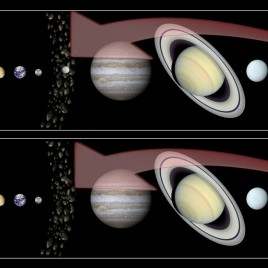Bright spots on the surface of Ceres suggest there is water activity in the main asteroid belt, and that asteroids may be more active than previously thought. Researchers analyzed data obtained from the Dawn spacecraft to make detailed observations of Ceres surface.
The researchers detected 130 bright spots, which they believe contain haze, showing the involvement of a volatile component, which the researchers believe to be water. They believe the haze shows the asteroid, which had previously been thought of as a dwarf planet, is geologically active, a surprising find on an asteroid.
The team wrote in the paper that Ceres is the first large object in the main asteroid belt to show signs of “comet-like” activity.
Original research paper published in Nature on December 9, 2015.
Names and affiliations of selected author
Andreas Nathues, Max Planck Institute for Solar System Research, Goettingen, Germany
E. A. Cloutis, Department of Geography, The University of Winnipeg, Manitoba
Thumbnail image credit – NASA/JPL-Caltech/UCLA/MPS/DLR/IDA

